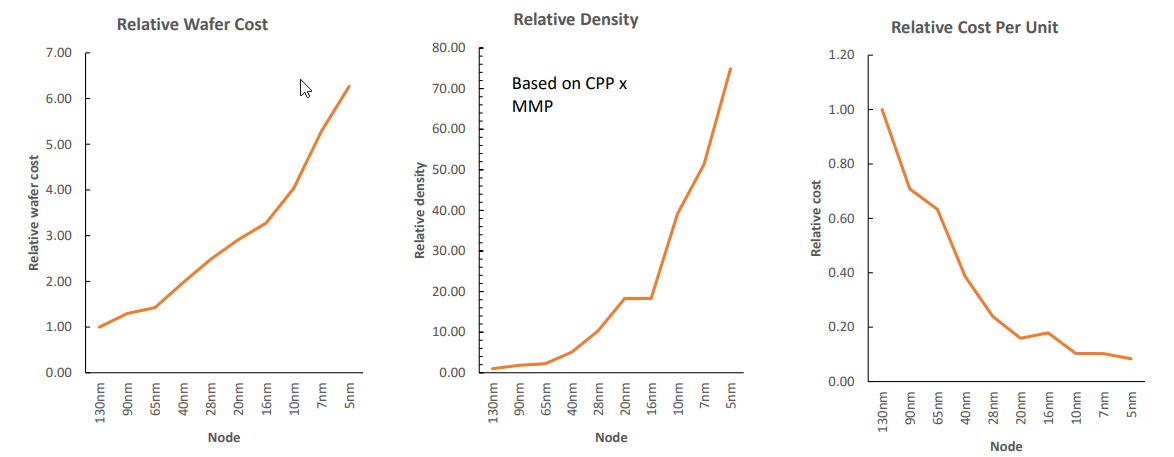Die size estimates have been floating around ranging from about 255mm2 to 275mm2:
https://www.anandtech.com/show/1441...ducts-rx-5700-series-in-july-25-improved-perf
https://wccftech.com/amd-navi-rx-57...gs-rtx-2070-performance-at-half-the-die-size/
The Wccftech story seems to imply that close to half the die size of 2070 will be substantially cheaper, but really it will probably much closer than that. 7nm is a much more expensive process, so things are closer than they appear. Cost per transistor is better for 7nm, but not by a huge amount. The important thing, is how many transistor have we to work with.
Using Radeon 7 on TSMC 7nm process and 13.2Billion transistors and 331mm2 die size in conjunction with the above estimates.
13.2/331x255 = ~10.2 Billion Transistors
13.2/331x275 = ~11.0 Billion Transistors
Compare to RTX 2070 die at 10.8 Billion. (1660ti at 6.6 Billion).
Either way transistor count is very close to 2070, so die cost should be a little less than 2070, but not substantially so.
Bottom line:
AMD is in a much better position than they were with Vega 64 needing substantially more transistors (12.5 Billion vs 7.2 billion ) than GTX 1080, along with more expensive HBM memory to match performance.
But it is more parity, than big advantage that Wccftech implies.
https://www.anandtech.com/show/1441...ducts-rx-5700-series-in-july-25-improved-perf
Thanks to our own Andrei Frumusanu for doing the leg work, we now have a die size estimate based on these and some unpublished photos. Our working guess right now is 275mm2, give or take a few percent. Though that's going to be less precise than what a proper micro-caliper measurement will turn up, so this is very much still just an estimate.
https://wccftech.com/amd-navi-rx-57...gs-rtx-2070-performance-at-half-the-die-size/
Earlier today we’ve managed to confirm that the company’s upcoming Navi GPU, which was unveiled for the first time earlier this week and is set to power the company’s upcoming RX 5700 series graphics cards, is in fact only mid-range Navi with a die area of roughly 255mm².
The Wccftech story seems to imply that close to half the die size of 2070 will be substantially cheaper, but really it will probably much closer than that. 7nm is a much more expensive process, so things are closer than they appear. Cost per transistor is better for 7nm, but not by a huge amount. The important thing, is how many transistor have we to work with.
Using Radeon 7 on TSMC 7nm process and 13.2Billion transistors and 331mm2 die size in conjunction with the above estimates.
13.2/331x255 = ~10.2 Billion Transistors
13.2/331x275 = ~11.0 Billion Transistors
Compare to RTX 2070 die at 10.8 Billion. (1660ti at 6.6 Billion).
Either way transistor count is very close to 2070, so die cost should be a little less than 2070, but not substantially so.
Bottom line:
AMD is in a much better position than they were with Vega 64 needing substantially more transistors (12.5 Billion vs 7.2 billion ) than GTX 1080, along with more expensive HBM memory to match performance.
But it is more parity, than big advantage that Wccftech implies.
![[H]ard|Forum](/styles/hardforum/xenforo/logo_dark.png)
